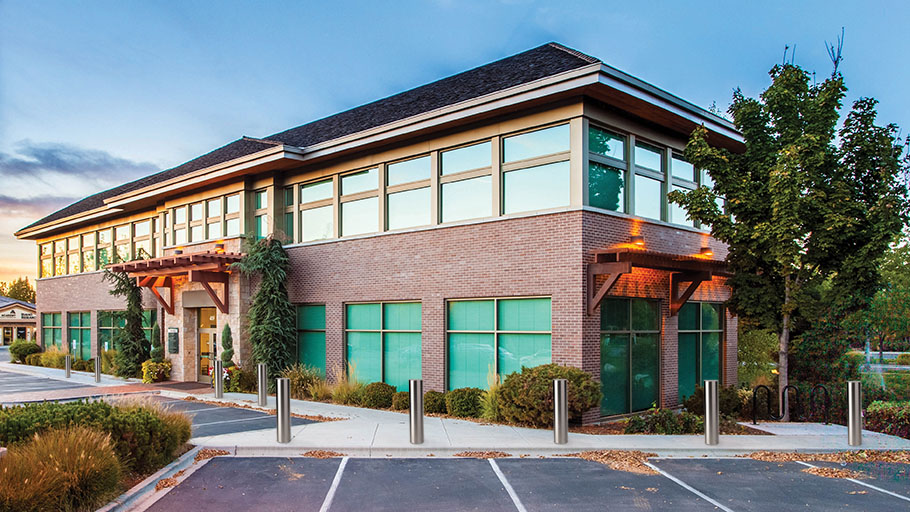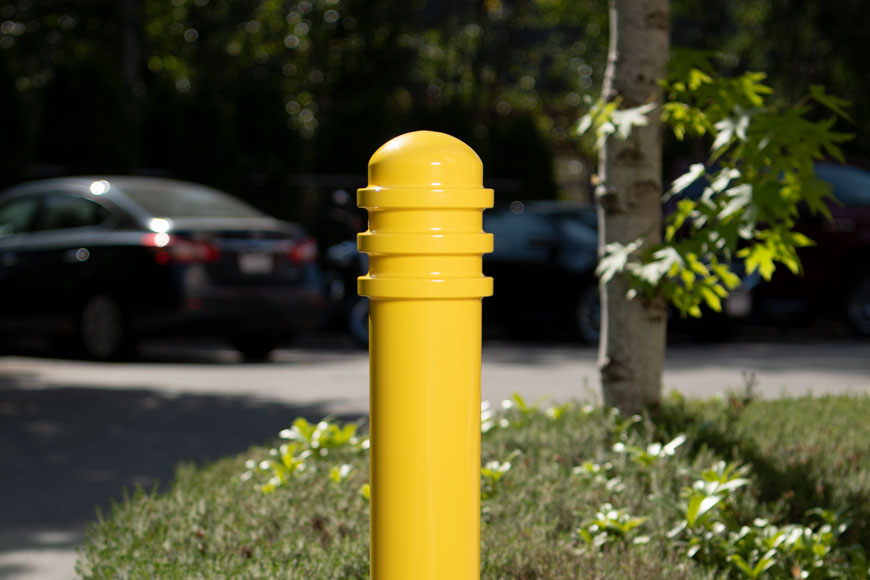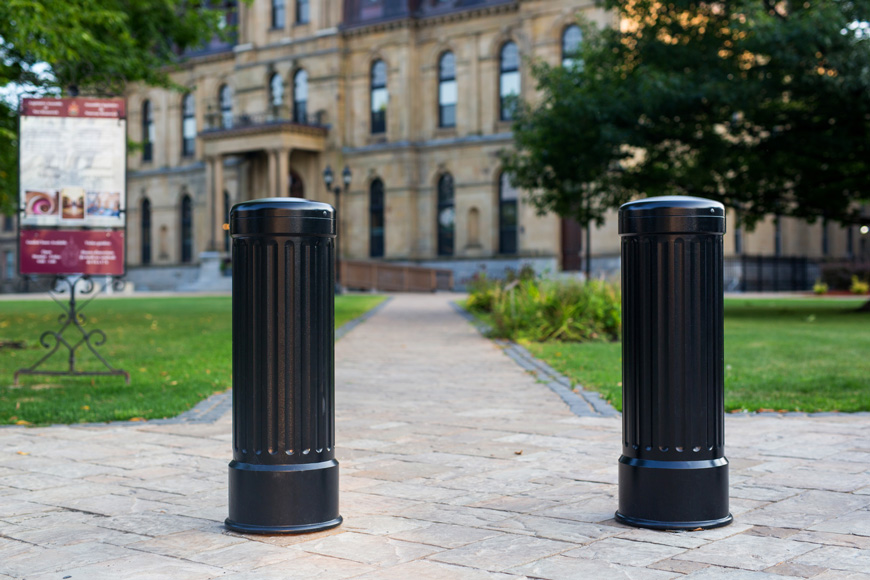For some bollard applications, perception is everything.
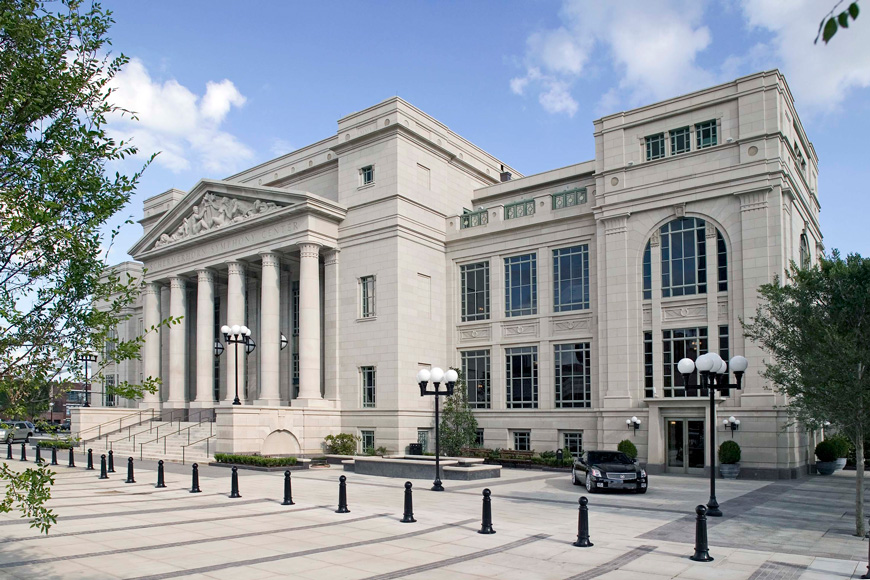
Since 2001, the public has become increasingly aware of the use of high-impact security bollards in city planning. Media stories and organizational press releases have highlighted how bollards can be used to protect people or properties vulnerable to car incursion. These discussions tend to center around high-impact safety bollards, or crash-rated bollards, each offering some level of impact resistance to the force of an incoming vehicle.
However, not all bollards are impact-resistant. With so much of the conversation focused on security applications, people are sometimes surprised to hear that low-impact bollards are still a major contributor to the overall market. What good is a bollard that can’t stop a car?
Regardless of its impact resistance, every bollard is perceived as an impediment to access. Like traffic cones or plastic lane delimiters, a low-impact bollard announces expected behavior. However, it can be found in a range of styles that can be used to enhance the aesthetics of its environment, beautifying the street or park-scape it inhabits.
Most people operate in a “culture of civility” and are law-abiding. Drivers will generally stay out of areas marked by bollards, reading the posts as if they were signs announcing restricted areas. Even those citizens who sometimes flout laws will see them as notification of a border, and understand there may be consequences for crossing it. Traffic cones and bollards are therefore effective for cultural and psychological reasons, even if by themselves they have no stopping power.
Not all design in public space needs to focus on preventing criminal actions. Many times, simply letting people know what is expected is enough to encourage courteous, safe behavior, and a security bollard would be an unneeded expense. In some applications, a high-impact bollard may even have downsides.
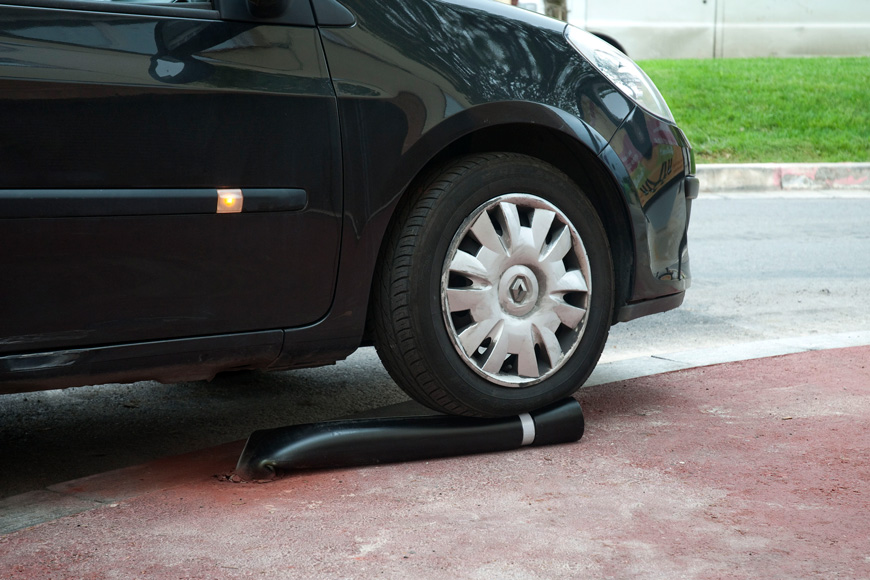
Flexible bollards
Low-impact bollards might be explicitly chosen because they do not damage cars that hit them. Flexible bollards are designed to bend 90° if overrun. In parking lots, it is common for drivers to drag their front bumpers over concrete parking stops and cause damage to their paint. Flexible bollards can do the same job of demarking the end of a stall without this risk, and have the added benefit of being a more visible barrier due to height and color. If these bendable bollards are used to delimit lanes, for example along the edge of a bike lane or sharp curve, bumping them will notify a driver that has strayed from their lane without stopping the flow of traffic. In some situations, this flexibility is required to install a lane delimiter in an area where lanes are expected to be straddled, as in a parking structure where large trucks occasionally need to take wide corners and move through more than one lane.
Architectural bollards
The addition of bollards to a building site can enhance the look of the architecture, even if they’re in an area at no risk of vehicle incursion. For example, they can be placed as markers around the edges of a building’s front lawn as an attractive garden edge; be joined together with chains to provide a scalloped visual border; or be installed in precise lines designed to echo architectural details, like sweeping arcs or sharp corners. In these purely decorative or architectural applications, bollards do not need to provide impact resistance, as their function is to increase aesthetic value. Styles range from classic to contemporary, and can accent the historic or cosmopolitan ambience of a streetscape. Decorative bollards are so versatile in the streetscape that most can be used as post covers to enhance high-impact security pipe.
Landscaping bollards
Architecture isn’t the only thing bollards are effective at highlighting. They also play a key role in many landscaping applications, where they accentuate natural features and enhance rural landscapes. A ring of bollards around a planted area can keep a lawnmower away from flowers and bushes, or be placed in a perimeter around a playground space while still providing easy access to those pushing strollers. When used with chains, bollards can be a stylish way to ask pedestrians to stay off the grass.
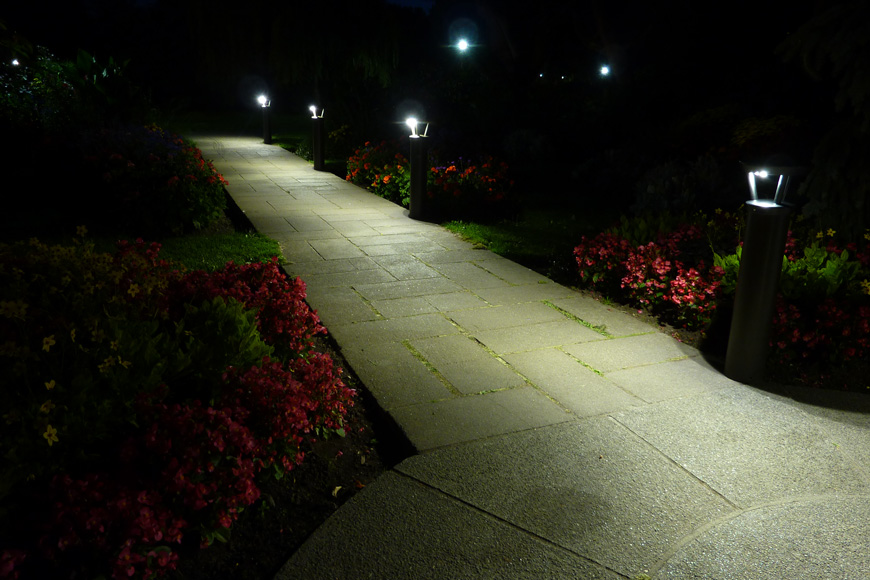
Lighting bollards
If lining a pathway, landscape bollards can sometimes be put to double duty, as they make an ideal base for pathway lighting systems. Lighting bollards provide illumination that both increases safety and heightens a site’s aesthetic appeal during nighttime hours. With advancements in solar technology, these can often be installed without dependence on an electrical grid. Successful solar bollards usually have onboard computation that allows for adaptation in output depending on time of day and amount of stored electrical charge.
Bike bollards
As bicycle parking has become an essential component of contemporary streetscapes, many bollards now offer the additional feature of secure bike-locking arms. Bike bollards look similar to classic bike stands or hitching posts, but usually feature a more ornate style and serve the additional function of traffic guidance. They are almost always created from metal and they are available in a wide variety of designs to coincide with every architectural motif.
Planning for low-impact bollards
Bollards that do not offer a high level of impact security or ram-resistance still perform many helpful functions in outdoor spaces. From architectural highlighting to lane delineation, they can play a key role in the design of many contemporary streetscapes. The wide array of services they can provide shows that these little posts do not have to be able to physically stop a car to be useful.










